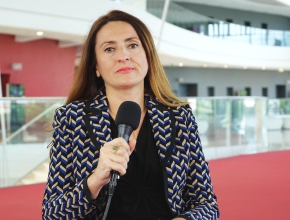How to monitor disease activity in patients with giant cell arteritis (GCA)? Is it useful to measure interleukin-6 levels, or are inflammatory markers (erythrocyte sedimentation rate [ESR], C-reactive protein [CRP]) sufficient?
Bhaskar Dasgupta: Very good question. At the moment, clinically we are monitoring them [for] signs and symptoms of GCA. We do look at the inflammatory markers, of course: we look at the ESR or at the CRP. If we had the facilities, we would monitor interleukin 6 or interleukin 17. The problem is, there are some medications—for example, tocilizumab—that are being shown to be very successful in GCA. If you give tocilizumab, the interleukin-6 levels go up, so it is not a very good monitoring test. But I am sure we need better biomarkers for the monitoring of GCA.
The best way to monitor GCA that we have at the moment is by imaging. Ultrasound is not only useful for diagnosis but it may be a very good monitoring test. If you see the halo [sign], after 1 month you want to find out whether the halo is gone with the steroids. You want to look at the axillary arteries, and in the axillary arteries you can see thickening, inflammation, and you want to see whether that has gone with the steroid therapy. We monitor their intimal-medial thickness in the axillary artery as part of the disease activity monitoring.
 English
English
 Español
Español
 українська
українська











